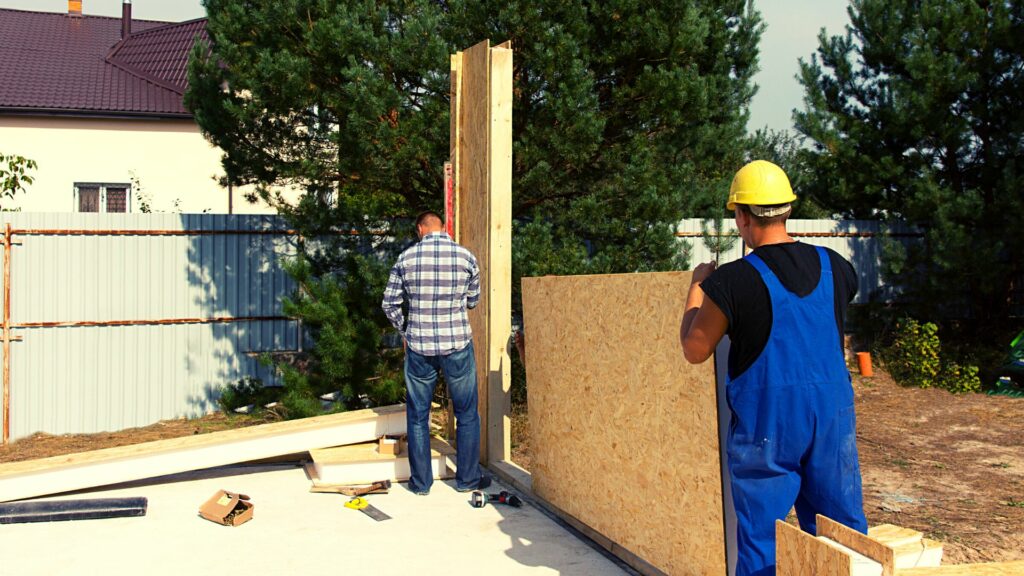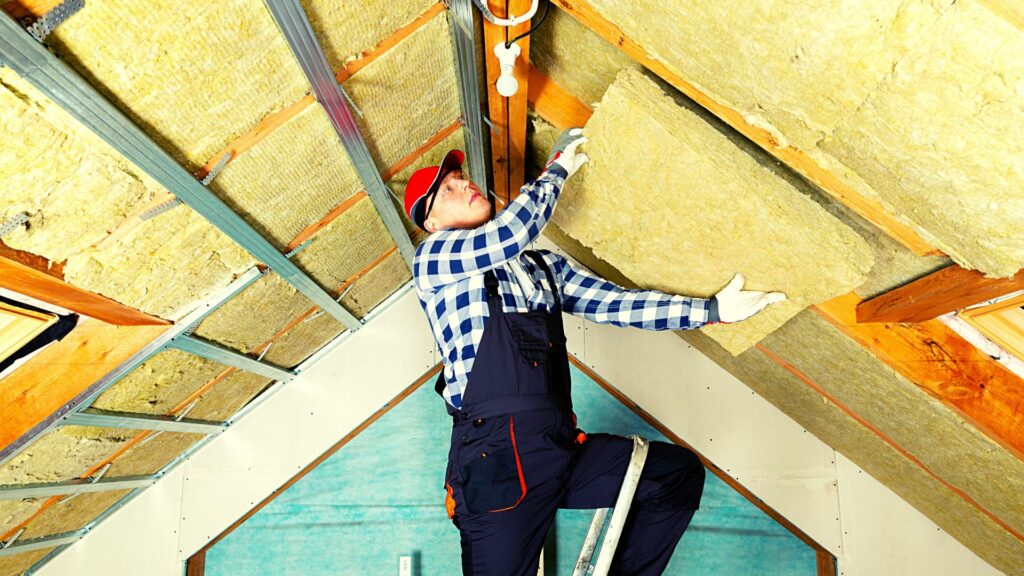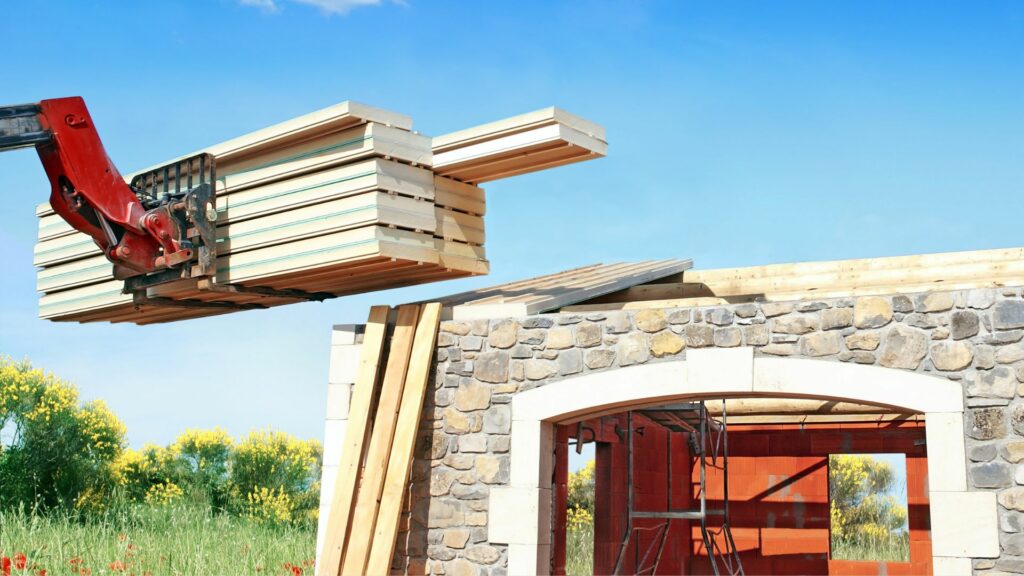Structural insulated panels (SIPS) construction is one of the most popular modular construction methods of the 21st century. SIPs construction was invented in the 1950s but only gained popularity in recent years. It is now widely used as a quicker and more effective method than traditional construction methods such as block and brick. So, are SIPs the next big thing in construction, or is it a fad?
Structural insulated panels make up approximately 8% of self-builds because they have significant advantages over traditional blocks and bricks. SIPs speed up the initial stages of construction, increase the building process's efficiency, and get a building to completion in less time.
When considering whether or not to choose structural insulated panels for your next construction project, it is essential to factor in the advantages and disadvantages of this construction method in detail.
Read on to explore the most common advantages and disadvantages of SIPs, and learn how to make a SIPS build successful.
Table of Contents
What are structural insulated panels (SIPS)?
The term “structural insulated panels” refers to a commercial and residential building system of insulating foam or polystyrene core pressed between two oriented strand board facings.
SIPs are prefabricated and fitted together on-site to create a building’s entire structure. SIPs are ideal for walls and floors as they offer excellent insulation.
The closed-cell structure of the foam used in SIPs is ideal for building because of its structural properties. SIPs are rigid and therefore allow for flexibility in the design of the building.
Since SIPs are rigid, they provide enough structural support, reducing the need for additional beams. However, it is essential to ensure that the quality of the oriented strand board facings is up to industry standards.

Advantages of structural insulated panels
SIPs offer benefits for all stakeholders involved in construction. Some of the advantages are:
- Energy efficiency: SIPs offer energy efficiency because the foam core is an excellent thermal insulator. SIPs provide more thermal insulation than fiber insulation. SIPs offer airtight construction, which minimizes the air entering and leaving interior spaces, thereby reducing thermal interference.
- Structural superiority: Structural insulated panels are relatively strong due to their composite foam core. The outer OSB reinforces the foam core and makes SIPs much more robust than timber.
- Cost-effective: SIPs are manufactured off-site and assembled at the building site. This means they can easily be transported into areas with difficult access and craned into place, making the construction much shorter. This can reduce costs and time compared to standard construction methods.
- Design versatility: SIPs allow for flexibility in building design because they can accommodate greater spans of walls in terms of size and shape. SIPs can accommodate up to 3 stories and 4 meters of floor space.
- Pest resistance: Because of the foam core, SIPs are less prone to pest infestation than standard construction materials.
Disadvantages of structural insulated panels
Below are some of the common drawbacks of structural insulated panels.
- Prone to moisture damage: structural insulated panels degrade quickly when they get wet, causing the outer wood to rot. Degradation of SIPs leads to de-lamination of the composition, which ultimately undermines the insulation and structural properties of the panels.
- Little room for improvements: The design of a SIPs building cannot be altered once finished. SIPs are prefabricated, so there is little you can do if you wish to make changes, especially to the exterior design.
- Limited durability: SIPs have an estimated lifespan of 60 years, meaning that a SIPs building will need renovations in a few decades. This lowers the lifetime of a building and, subsequently, its value.
- Limited availability of experienced contractors: Although SIPS were invented in the 1950s, they only became popular in the past couple of decades. It may not be easy to find contractors and builders with experienced building SIPs homes. You may have to wait a lot longer for a professional than you would like to.
- Require additional ventilation: SIPs homes and buildings may require a unique ventilation system because of the airtight nature of the buildings. Such structures may need other vents and extractors to prevent condensation and mold build-up that would otherwise damage the panels.
- Additional insulation may be required: SIPs constructions have impressive thermal ratings, but the panels’ gaps can be problematic if not correctly installed. As a result, you will have to consider adding insulation to ensure a tight seal.

Alternatives to structural insulated panels
If you are in the market for a long-term insulation solution, the only alternative to SIPs is spraying. Remember, though, that blown-in spray foam is prone to mold and dampness because they retain moisture.
Spray foam insulation has the edge over structured insulated panels because it can be added during construction or as a retrofit.
Spray foam insulation offers better longevity because it can be used with traditional construction methods such as bricks and blocks, which are more durable than SIPs. Spray foam is an alternative that allows you to have the best of both worlds.
SIPs offer more efficiency and reduce time spent building, but spray foam provides longevity that several generations can enjoy.
Summary
Structural insulated panels are the ideal construction method for the modern homeowner because they save time and offer greater efficiency than traditional construction methods such as bricks and blocks.
SIPs make it easy to build in areas with difficult access. They are also energy-efficient and offer more insulation than bare timber. However, SIPs are prone to damage from moisture, have limited durability, and provide little room for improvements.
Additionally, SIPs constructions may be tricky to achieve because finding builders and contractors with the necessary expertise may prove difficult. SIPs constructions also typically require additional ventilation because of how SIPs are manufactured.

